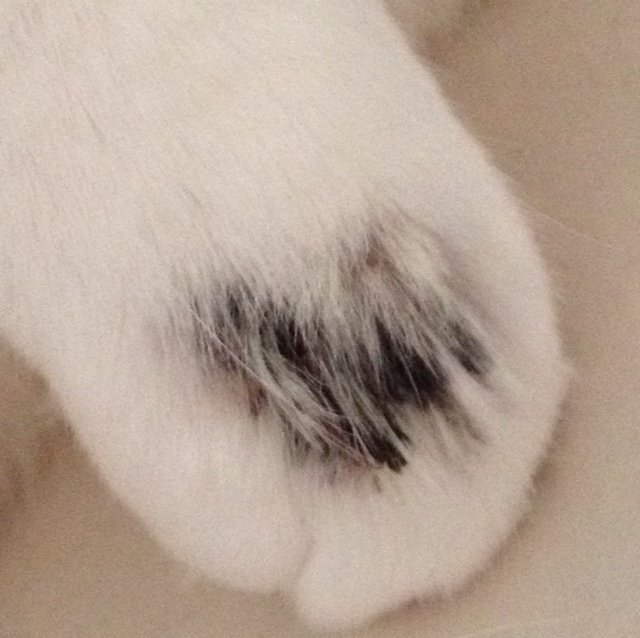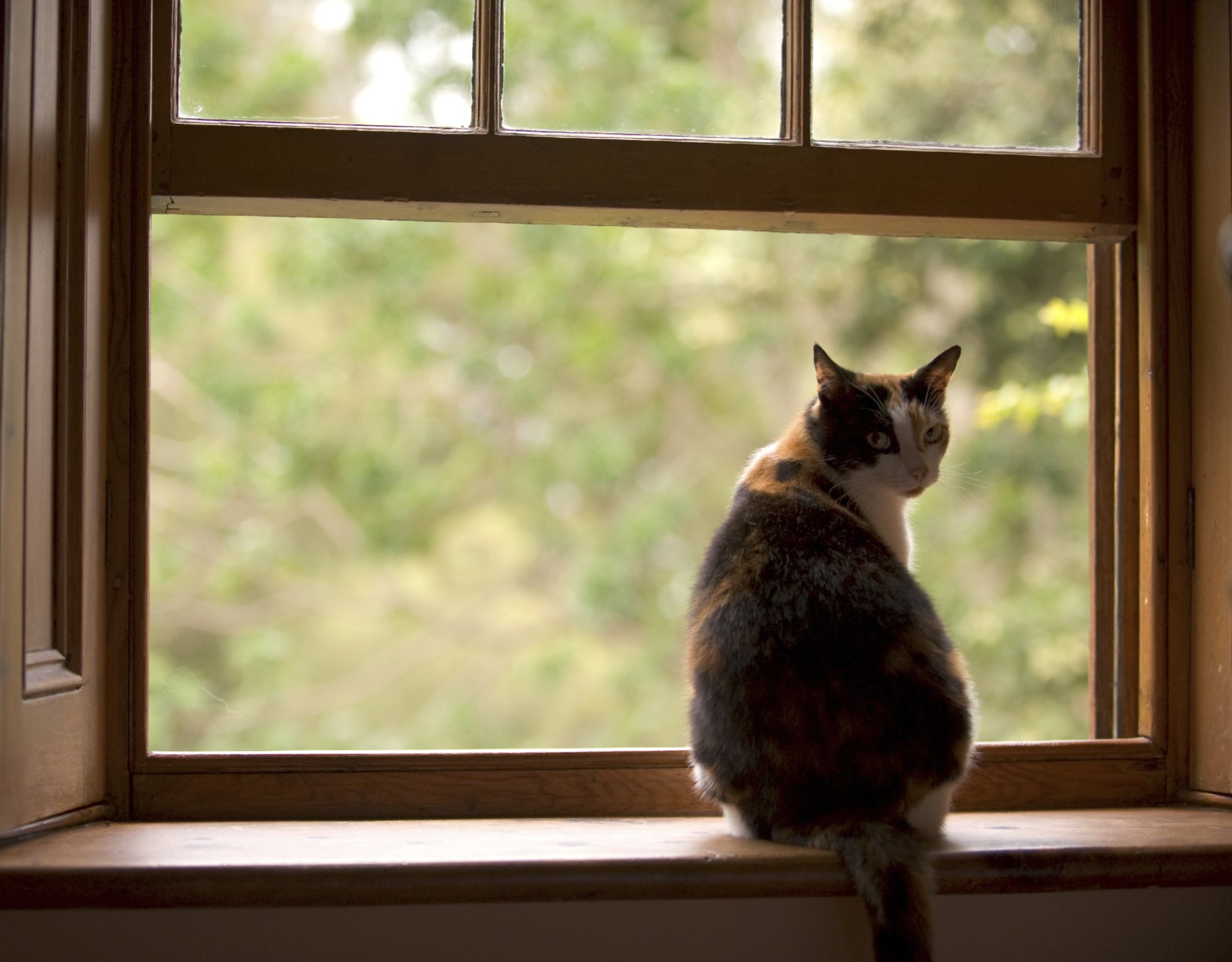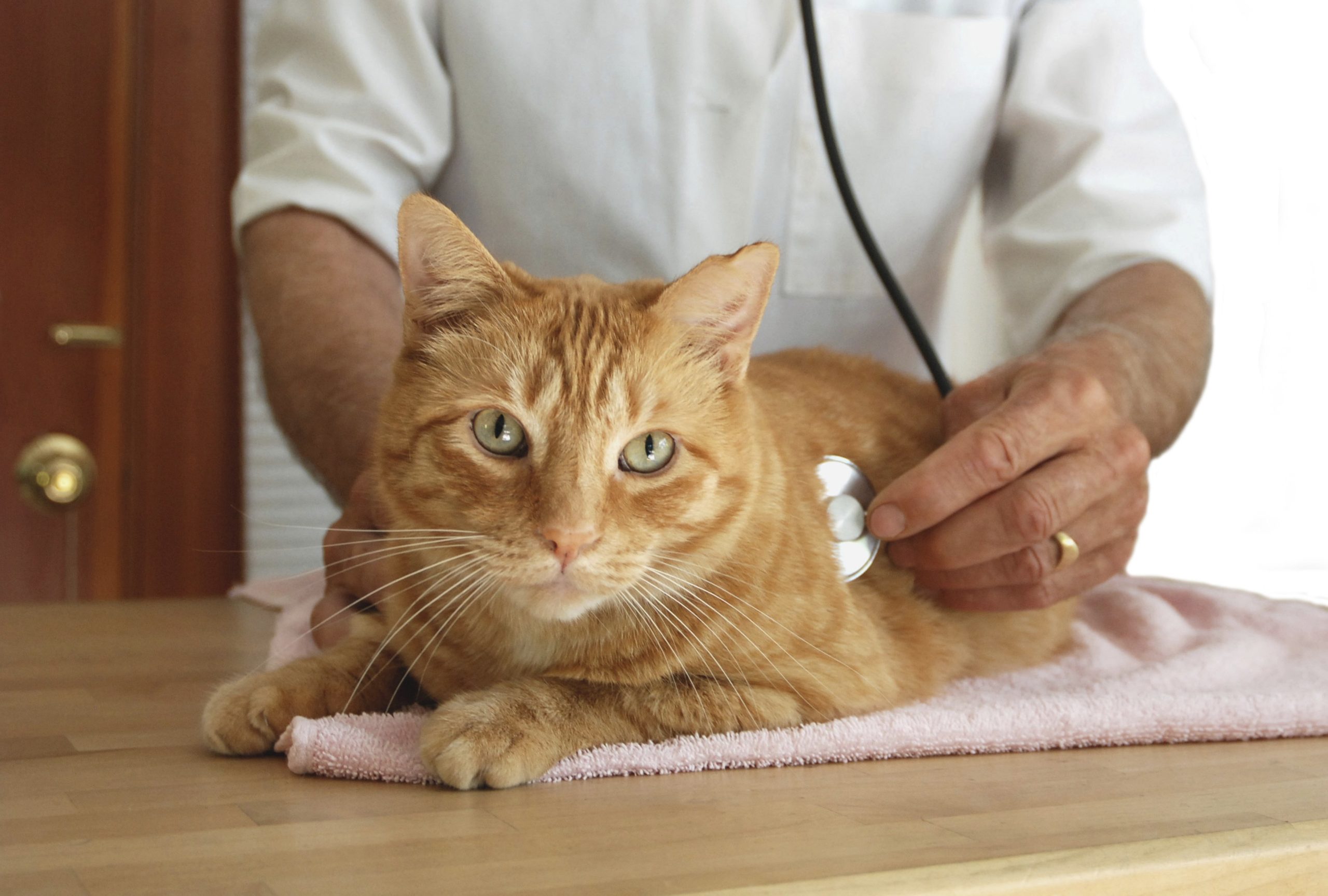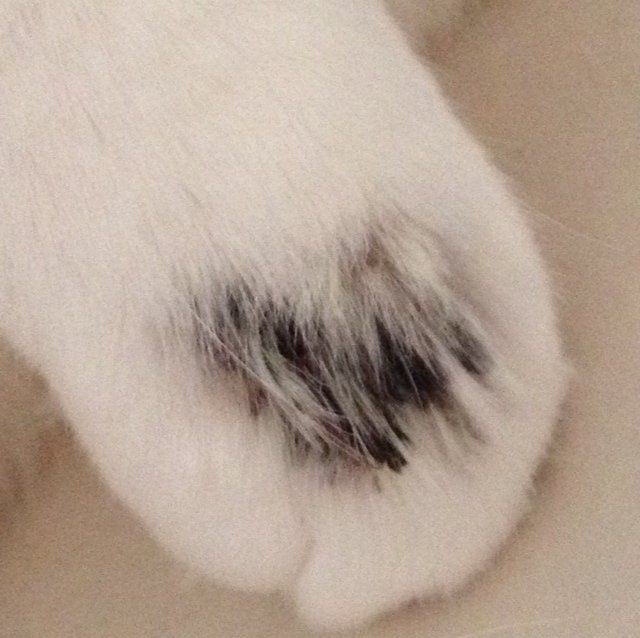A Returning Growth
Q My 11-year-old male cat has a growth on his right paw (see photo below). The growth contains some hard round claw-like tubular material. This growth was removed a year ago by the veterinarian, but it has now reoccurred. What could be this be?
Joseph Kelley
A Dear Joseph: It is a bit hard for me to identify the growth in the picture you sent, but from what you describe, I am guessing it is benign and nothing to worry about — unless it enlarges rapidly, ulcerates and begins to bleed, or starts to bother your cat.


However, you should recognize that no veterinarian is able to guess correctly whether growths are benign or malignant, just by looking at them and feeling them, 100 percent of the time.
Therefore, I would recommend that your veterinarian aspirates the growth with a needle and syringe and has it examined under a microscope (cytology), or removes the mass, or a piece of it, and submits the tissue for a biopsy. If the mass is malignant, it should be completely removed, if possible.
John Berg, DVM, DACVS
Professor of Small Animal Surgery
Cummings School
of Veterinary Medicine
at Tufts University
Supervised Explorations
Q I think that my indoor cat, Cody, might enjoy exploring the outside while wearing a harness and lead. I had some limited success years ago with my Siamese cat, Fred. We lived in an apartment and he would get very excited whenever I got the lead out. What is your opinion?
Shirley Wardzinsk
A Dear Shirley: I think it’s a great idea to train Cody to a harness and then take him outside to explore. I used to do this with my own cat, Cinder, who was a bit intimidated by the harness at first. She would lie flat, pin her ears back and remain motionless, but eventually, she warmed up to it and had a marvelous time outside, exploring our rock garden and waterfall.


Of course, all cats are different and some may prefer to remain indoors. The bottom line: You should offer your cat the chance to explore on harness (with lead attached, of course), but never force the issue.
And as always with cats, be patient. You may wind up having less success than you had with Fred but, then again, Cody might grow to love his occasional, closely supervised outdoor excursions on the lead.
Nicholas Dodman, BVMS
Animal Behavior Clinic Director
Cummings School
of Veterinary Medicine
at Tufts University
Cat With a Heart Murmur
Q My veterinarian told me that my cat has a heart murmur. Does this mean he will die prematurely from heart disease?
Karen Murphy
A Dear Karen: Your concern is understandable. But some feline heart murmurs don’t mean anything dire at all. And while some may be signs of a serious problem, the problem can often be treated, with the cat having many wonderful, comfortable years ahead of him. A murmur indicates only that there is blood flow turbulence somewhere in the heart or in the great vessels that are leaving the heart, and this can result from many different things.


A kitten, for instance, may have what is known as an “innocent” murmur that he outgrows. In fact, it’s very common for a kitten to have a soft murmur in the first months of life. Experts don’t exactly understand why, but one theory is that kittens are slightly anemic compared to adult cats and that blood with a lower red blood cell concentration tends to be a bit more turbulent.
Then, too, since kittens don’t have much body fat, turbulent blood flow is easier to hear through a stethoscope. Older cats may occasionally develop soft heart murmurs, too, due to anemia, fever, or other systemic illness.
An adult cat with a murmur might also have disease of the heart muscle, called cardiomyopathy. The most common type of cardiomyopathy in cats is hypertrophic cardiomyopathy, characterized by thickening of the heart muscle. That prevents the muscle from fully relaxing, thus limiting the amount of blood the heart can pump. The loudness of the murmur depends on where the muscle thickens. Murmur or not, cardiomyopathy often leads to congestive heart failure and may need to be treated with medicine to slow the progression of the disease. Appropriately treated cats can live a long time, often years, with a good quality of life.
Murmurs are graded on a scale of one to six for loudness or intensity. A grade one is so quiet that even an experienced listener can hear it only after a few minutes in a quiet room. A grade six, on the other hand, can be heard without a stethoscope if you put your ear close to the chest wall.
Not all heart murmurs call for immediate follow-up testing to determine their source. For a young kitten with a grade two or lower, an owner might reasonably want to hold off. But as a general rule for adult cats, for loud murmurs or for soft murmurs, an echocardiogram, or ultrasound of the heart, is in order. A chest X-ray might be part of a diagnostic work-up, too. And some veterinarians will order a blood test called NT-proBNP, also useful in diagnosing heart disease and assessing the need for further diagnostic tests.
Note that just as not all murmurs are signs of heart disease, lack of a murmur does not automatically mean heart disease is not present. Another way of putting it: Being told your cat has a murmur might be concerning, but it’s better to order tests that will determine whether heart disease is present than to allow an undiagnosed disease to silently progress without being treated.
We hope your cat is found to be heart disease-free, or at least in the early stages of heart disease.
Suzanne Cunningham, DVM, DACVIM
Veterinary Cardiologist
Foster Hospital for Small Animals
College of Veterinary Medicine
at Tufts University




